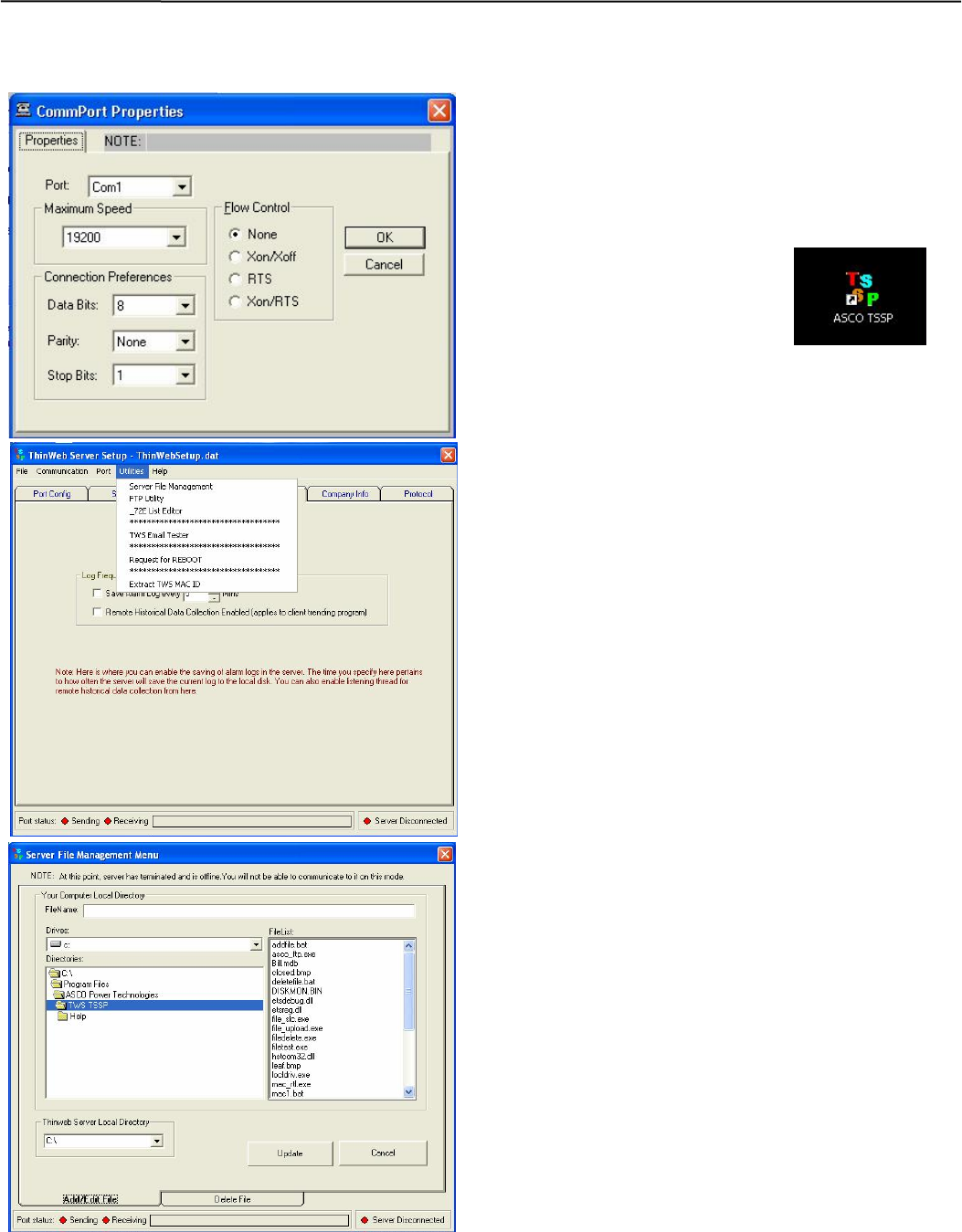
Thin Web Server File Management Utilities
5-1
How to copy, delete, and view files in the Thin Web Server
( to update firmware, to update documentation )
Two file management utilities are included on the install CD.
One is for Serial connection and the other is for Ethernet use.
Serial Connection
1. Connect the downloading serial cable between the TWS
and your computer. Be sure that the proper COM port
property settings are in effect.
2. Double click the icon on the
Windows desktop to start the TWS
software. On the menu bar click
Communication, then select
Connect to the Server. When the
TWS is connected the bottom right corner light turns
green Server Connected. On menu bar click Utilities
then Server File Management.
3. Choose Yes on all prompts. Listen for a series of low
beeping sounds after the last prompt (this indicates the
TWS is in the debug mode).
4. The Add / Edit File screen displays. Here you will be
able to transfer files from the local computer’s
disk/directory (source) to the TWS’s disk (destination).
5. To do this, locate and select the file from your local
computer directory listing (file is highlighted when
selected). Then select the target destination path in the
TWS where you want the file to be transferred. Choose
either C:\ or C:\HTML.
6. Click the Update button to start the process. A DOS
window opens. Let the process complete; do not
interrupt it. When finished, the DOS window will close
(with a series of beeping sounds).
7. You can review the current directory list of the TWS. To
do this click the Delect File tab (bottom of screen), then
click the View Server Disk button to start the process. A
DOS window opens. Let the process complete; do not
interrupt it. The first page of TWS files displays; press
any key to display the next page of files. After the last
page, the DOS window will close (with a series of
beeping sounds).
8. You can also delete a file from the TWS directory. First,
you should know exactly what and where the location of
file that you wish to erase (step 7 helps you verify and
locate the file). To erase the file, type in the complete
source path and file name in the FileName text box. Two
examples are shown below:
Example 1: C:\alarm.bin
This is an alarm log file in the root directory.
Example 2: C:\HTML\yel.gif
This is a file in the HTML subdirectory.
continued on next page
